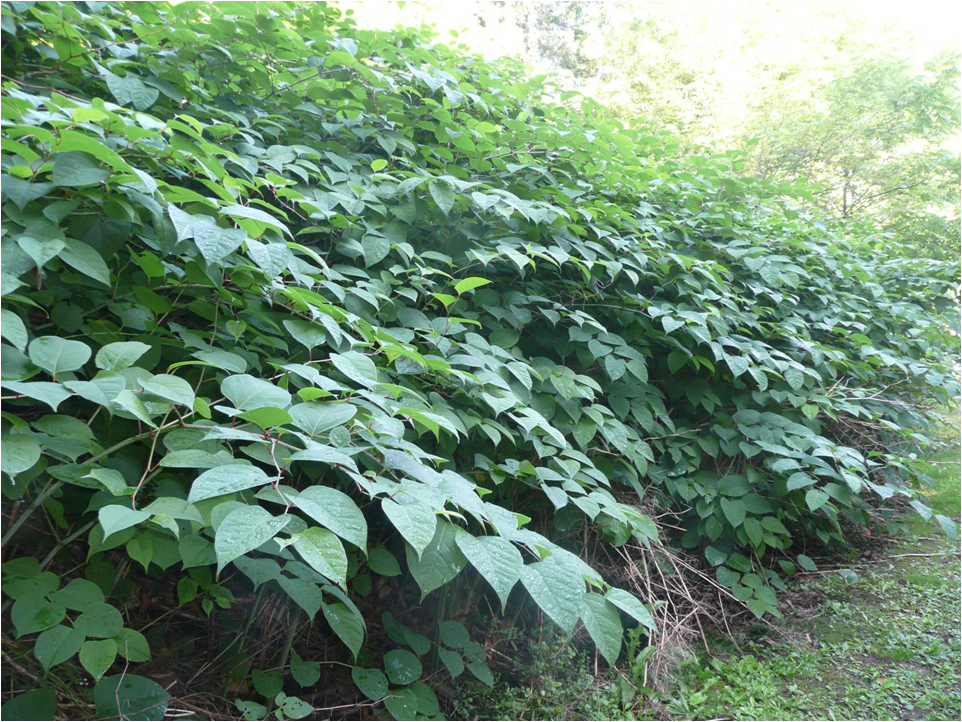Japanese Knotweed (Fallopia japonica)

Japanese Knotweed was introduced to North America as a horticultural plant in the late 19th century from eastern Asia (Japan, Korea, China and Taiwan). It was widely planted for the purposes of erosion control, and as forage for livestock. It has escaped cultivation to become an aggressive invader in North America.
Japanese Knotweed grows in a wide range of habitats including riparian areas, wetlands, roadsides, ditches, utility right of ways and fence lines. It is often found around old homesteads where it may have been originally planted as an ornamental. It spreads primarily through rhizome fragments (moved by water or machinery or equipment with soil containing plant parts), seeds and creeping roots.
It forms dense thickets of bamboolike vegetation that aggressively out-compete native plants, and negatively impact wetland and areas adjacent to water. Its extensive root system can be very aggressive and cause structural or foundation problems for public and private infrastructure.

